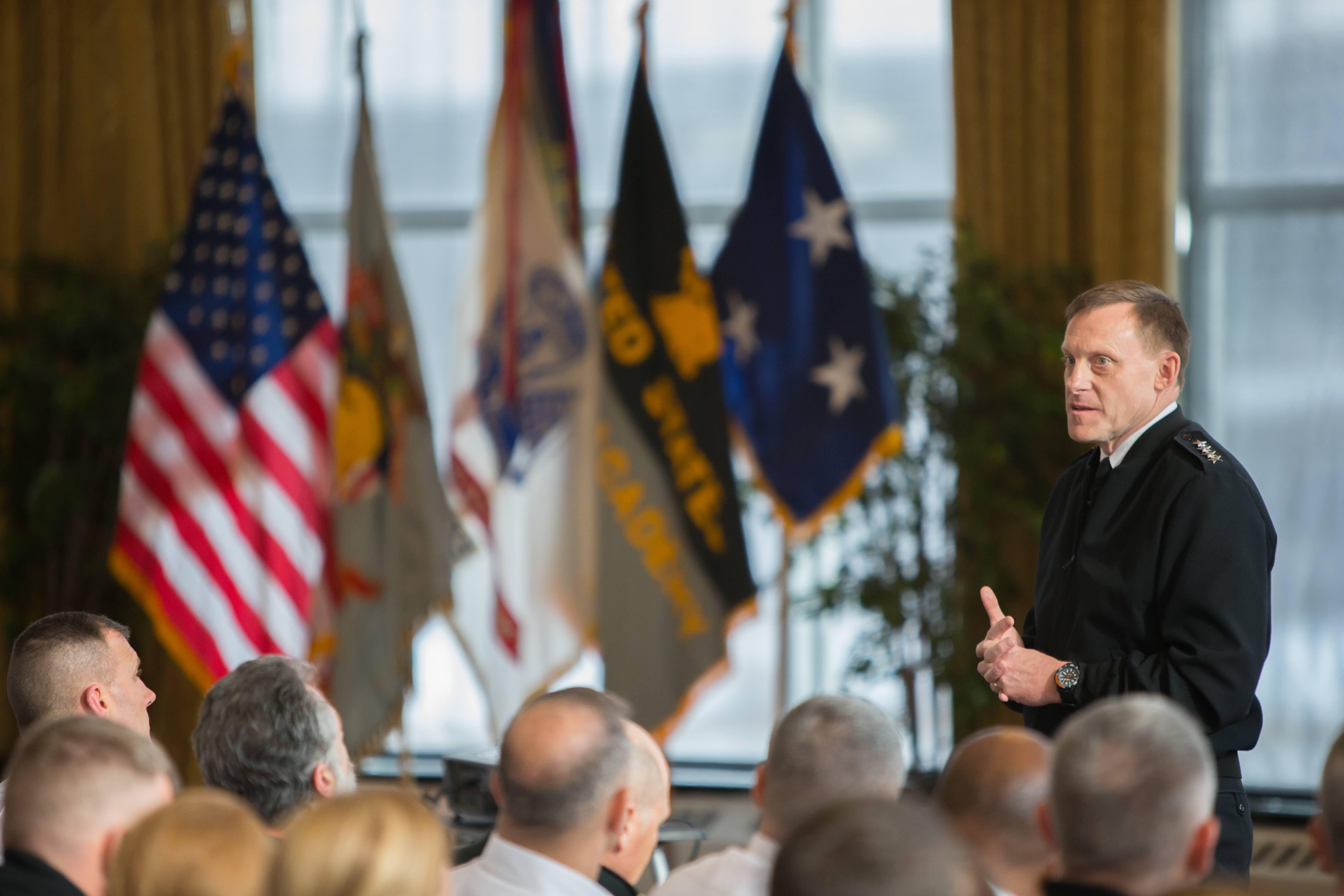By Cheryl Pellerin DoD News, Defense Media Activity
WASHINGTON, September 25, 2015 — Navy Adm. Michael S. Rogers,
director of the National Security Agency, previewed an upcoming NSA
reorganization and discussed a range of national security threats with members
of a Senate panel here yesterday.
Rogers, also commander of U.S. Cyber Command, testified
before the Senate Select Committee on Intelligence.
Rogers began his testimony by describing the work of “the
nation’s cryptologic arm” and its 40,000 civilian and military employees in 31
states and worldwide.
“NSA now plays a key role in cyberspace, assisting U.S. government
efforts to see, mitigate and deter cyber security threats. In concert with
public, private and foreign partners, our work helps to ensure that users,
operators and administrators maintain control of their systems and data,”
Rogers said.
“NSA also gives our leaders unique insights into the hostile
activities of foreign powers and their agents,” he added.
Reorganizing NSA
The agency does its work in accordance with the law and
within strict guidelines, Rogers said, and only by collecting foreign intelligence
in response to specific requirements from U.S. policymakers and senior U.S.
commanders.
Rogers has been in the job at NSA and Cybercom for 18
months, the first part of that time spent focused on the aftermath of the
Edward Snowden media leaks and ensuring that NSA’s collected data was secure,
he told the panel.
Over many months, Rogers and the NSA workforce have been
crafting a strategy for reorganizing the agency for a changing world.
“Our structure reflects a series of changes and choices that
have been made over the last 20 years. The last major organizational change at
NSA on a wide swath was 1999 or 1998 … and I want to make sure we're optimized
to meet the future,” the admiral said.
Optimized for the Future
Rogers posed questions to the workforce about NSA
capabilities and its evolving mission, and received more than 200 recommendations.
From those, Rogers said he chose three areas on which he asked them to spend
more time.
These included the military part of the workforce, a more
far-reaching view of cyber, and the NSA organizational structure, he explained,
adding that he would receive final input back on those areas by Oct. 1.
In his testimony on national security challenges for NSA and
the nation, Rogers mentioned the Islamic State in Iraq and the Levant and
similar groups, their technology capabilities and an issue known as “going
dark,” and the potential Oct. 1 government shutdown.
On the shutdown, Rogers answered yes to a question from the
panel: Would a shutdown of the federal government next week compromise national
security?
Retaining the Workforce
“And if I could just go beyond that -- in the last five days
or so, as we now are publicly talking about this possibility,” Rogers said, the
reaction of the workforce at NSA and U.S. Cyber Command, who could easily get
jobs on the outside and earn significantly more money there, is one of real
concern.
“This instability [is a] message to the workforce that … you
are a secondary consideration in a much larger game,” Rogers added, noting that
he spoke this week to the leadership about how to “figure out how we're going
to keep these men and women.”
On another national security issue, without going into the
details of NSA’s work, Rogers said the agency broadly uses its ability to work
communications in the foreign space to generate insights [about] what ISIL and
other groups are doing largely through NSA’s cyber and signals intelligence
expertise.
In the counterterrorism mission set, whether it's ISIL,
al-Qaida or al-Qaida in the Arabian Peninsula, Rogers said, “I've seen more
changes in their behavior in the last two years probably than any other
target.”
They actively reference some of the data compromises that
have occurred over the past couple of years, he added, “and we know that they
have achieved a level of insight as to what we do, how we do it, and the
capabilities we have that … they didn't have in the past.”
Going Dark
Rogers said that, as a result, combined with broader changes
in technology, it has become harder to achieve insight into what such groups
are doing.
“The nation's networks, communications and data are
increasingly at risk from diverse and persistent threats,” he said.
“These include rogue states, organized criminal enterprises
and terrorists who are showing a willingness and an aptitude to employ sophisticated
capabilities against us, our allies and indeed anyone who they perceive as a
threat or lucrative target,” the admiral added.
Such capabilities include going dark, or the use of
encrypted communications by terrorists and criminals, the use of apps that
offer end-to-end encryption, and more complicated attempts to hide in the
“broader set of noise out there,” Rogers said, adding that the motivated men
and women of NSA are the nation’s edge.
Working Together
This also poses a national security threat, Rogers told the
panel.
“I am concerned that the direction we're going -- if we make
no changes -- effectively represents a significant challenge for us in terms of
our ability to generate insight that the nation is counting on,” the admiral
said.
He added, “We have got to collectively get together among
the private sector, government, industry, policy, and the technical side, and
sit down and figure out how we're going to work our way through this.”








No comments:
Post a Comment